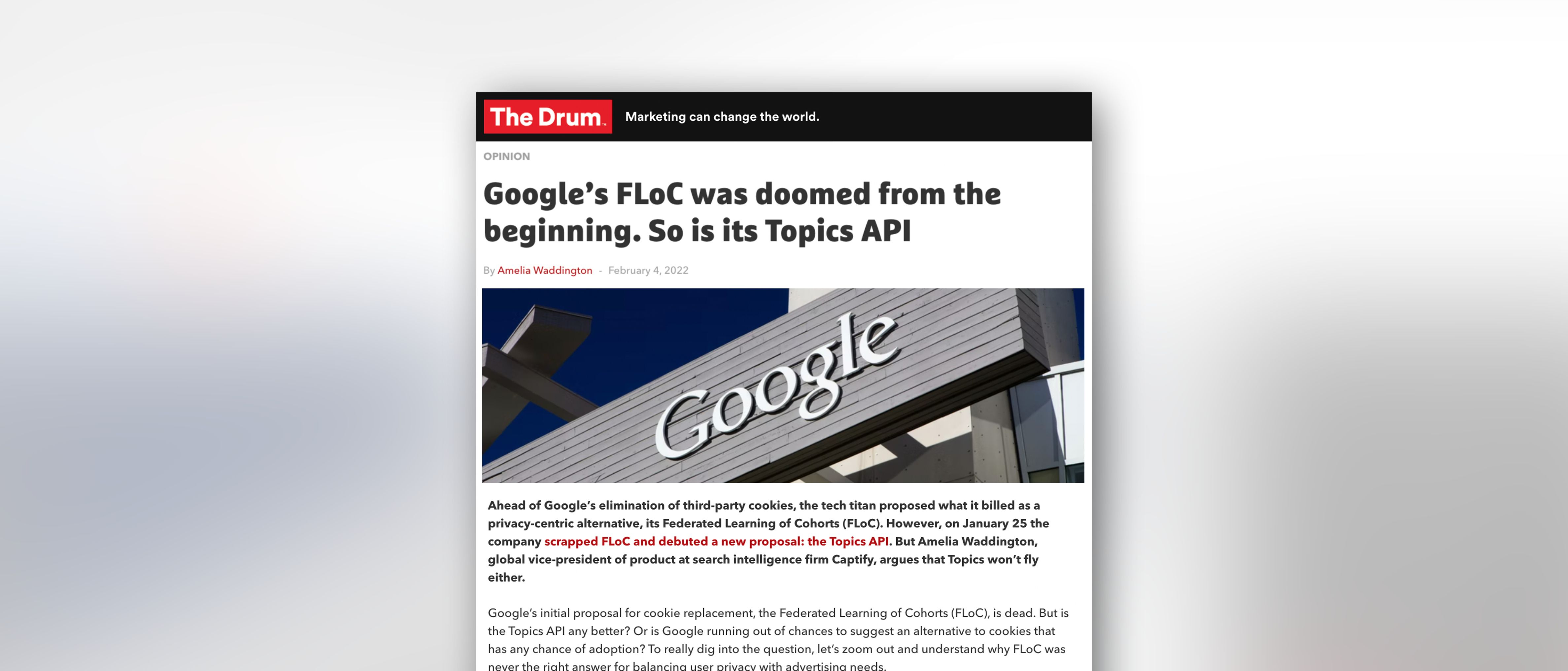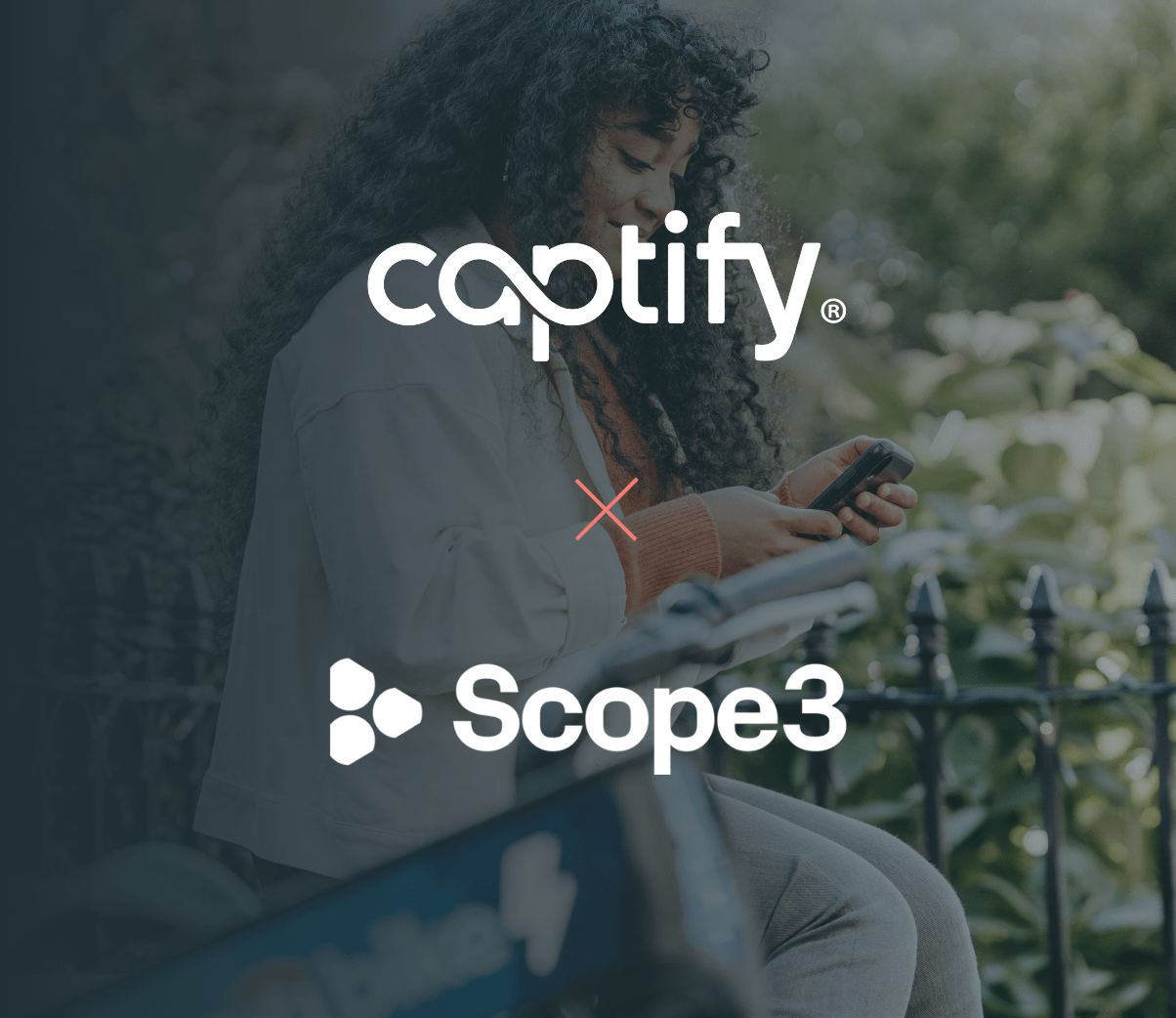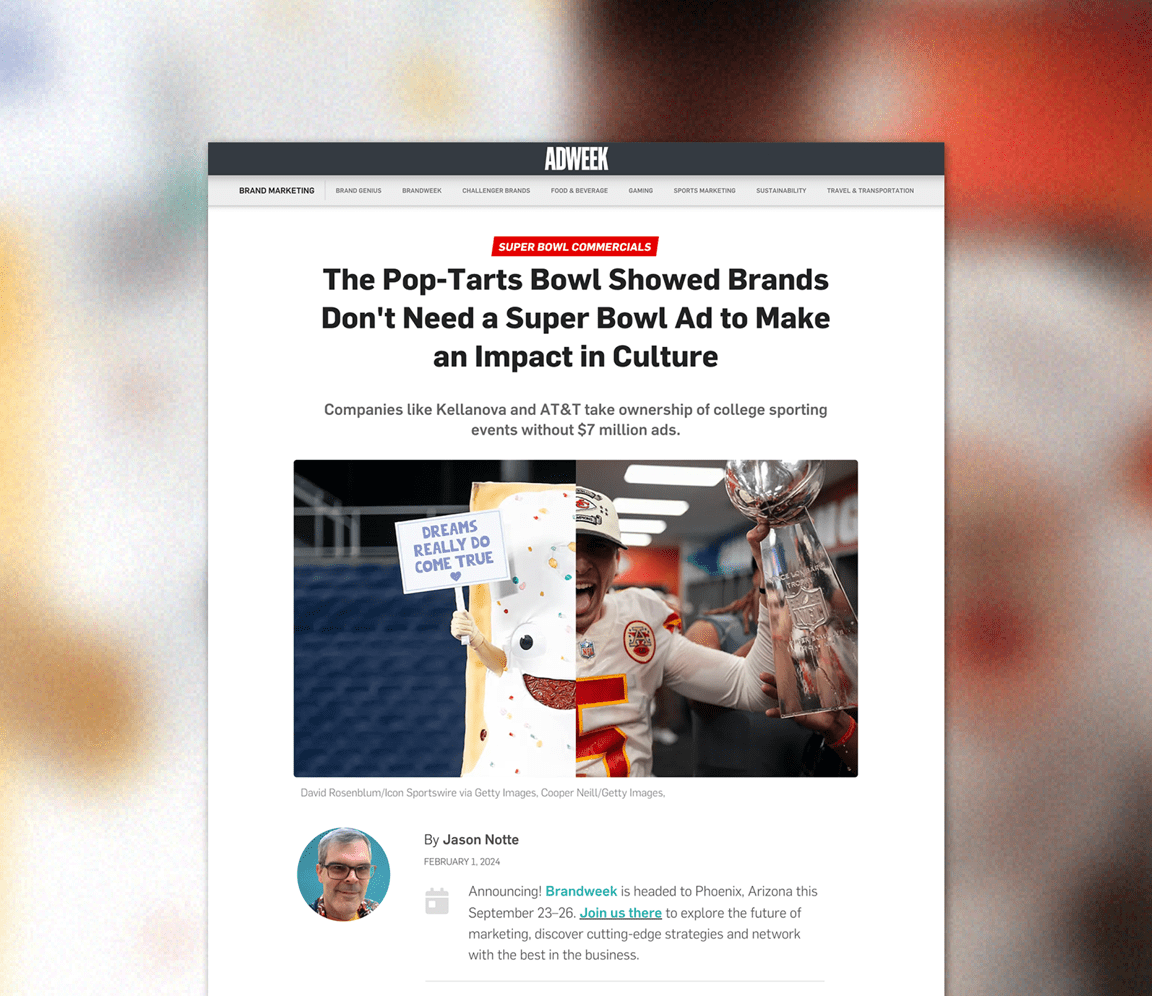The Drum: Captify’s Global VP of Product, Amelia Waddington—Google’s FLoC Was Doomed From The Beginning. So Is Its Topics API
Extracted from The Drum, Author Amelia Waddington, Captify’s Global VP of Product
Ahead of Google’s elimination of third-party cookies, the tech titan proposed what it billed as a privacy-centric alternative, it’s Federated Learning of Cohorts (FLoC). However, on January 25 the company scrapped FLoC and debuted a new proposal: the Topics API. But Amelia Waddington, global vice-president of product at search intelligence firm Captify, argues that Topics won’t fly either.
Google’s initial proposal for cookie replacement, the Federated Learning of Cohorts (FLoC), is dead. But is the Topics API any better? Or is Google running out of chances to suggest an alternative to cookies that has any chance of adoption? To really dig into the question, let’s zoom out and understand why FLoC was never the right answer for balancing user privacy with advertising needs.
The writing was always on the wall
Firstly, despite the name, there was no federated learning deployed in the FLoC framework. Google proposed that chromium-based browsers would cluster users based on their browsing patterns; users with similar browsing behaviors would belong to the same cohort.
Since the clustering methodology defined the cohorts automatically, advertisers weren’t able to identify the specific interests of each cohort – like, for example, cooking or exercising – essentially making it impossible to activate manual or insights-based strategies. Only automated optimization algorithms could find the correct FLoC ID for a specific campaign.
Want to find out more? Read the full article on The Drum.



